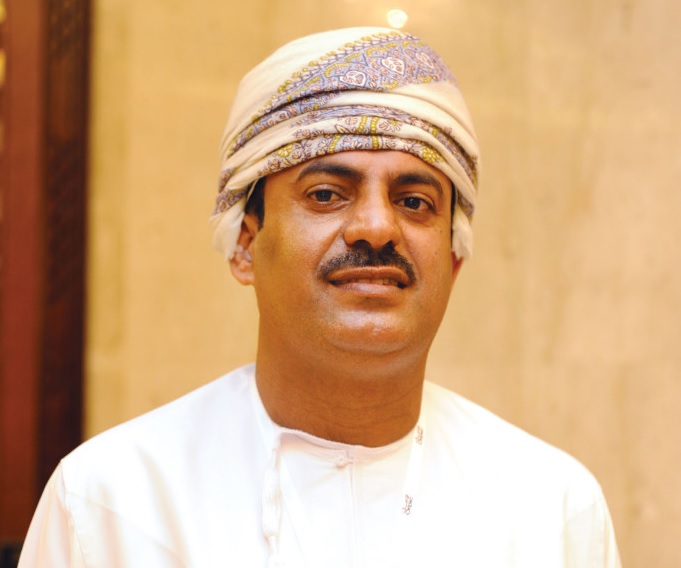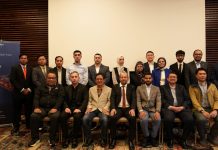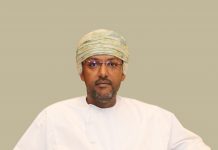Nofal Al Saidi, GM – Human Resource Services, Orpic shares the best practices being followed by the company to enhance its value proposition for employees and the organisation. An OER report
Can you share some of the HR initiatives that Orpic has taken in the last year or so?
As part of our programme and growth strategy, we need to almost double our workforce in the coming years- to about 3,000 employees by 2020. Based on that, we undertook a comprehensive programme and initiatives in order to enable the organisation to meet growth project demands as well as intake the forecasted workforce. We have undertaken a number of initiatives in development, recruitment, acquisition of talent, leadership, and employee value proposition (EVP).
Overall, we have three main pillars in HR.
- Talent acquisition (attracting)
- Development
- Retention
Under each pillar, we carry out a number of initiatives.
Talent acquisition and attraction
One of the new initiatives we have undertaken is called the ‘recruitment machine’. This allows us to be more effective and efficient in our recruitment process. We started this initiative about two years ago. However the peak was in 2015, where around 275 experienced staff were recruited and 214 trainees were confirmed. In addition to that, 272 trainees were recruited and more are in the pipeline. Overall, more than 800 people joined the Orpic family.
Our development programme continues on a regular basis. To attract the right talent, we regularly try new initiatives. We have created a new hyperlink on the Orpic website – called the ‘people page’. We hope that this will be an anchor in attracting the right talent.
We undertook a feasibility study in order to better undertake the market dynamics and Orpic’s requirements. We realised that we attract a lot of young talent and they are extremely tech-savvy, hence we decided to make our page interactive. In 2015, we managed to launch a hyperlink on the Orpic website, however sustainability is critical. Our people page is linked to our recruitment model system – so all CVs go there directly. Our recruitment model is connected to our system and a filtration mechanism and screening, which will enable us to filter the CVs in line with our needs and requirements. With time, we will use E-Recruitment in SAP.
We have a dedicated team, where they validate the CVs against our criteria. This is followed by an interview panel, interviews, assessment etc. to ascertain the right candidate. We receive a lot of CVs; however we have our own set of criteria and requirements which are in line with our corporate vision of the Orpic way. Hence, we have a comprehensive process to determine the right candidate.
We conducted an extensive programme in 2015 – EVP which basically tackles the three core pillars of our HR values. The core purpose is however to retain employees but it also covers the other two aspects. Our survey indicated that we need to improve our on-boarding, selection criteria and have more certified assessor for interviews which will enable us to better select candidates and also help in improving the selection process.
The survey also indicated that we need to face other challenges in Sohar – such as availability of schools and accommodation etc. We have partnered with Sohar Aluminum to expand their existing school (Al Batinah International School – ABIS). Our next step is to address the issue of accommodation. It will also provide recreation centres, camps which will attract more people.
Development
One of the things we measure is employee development index (EDI). This year we have achieved very high results compared to the previous years. Almost 480 to 490 Omani employees were confirmed and given more complex jobs and this is a positive indicator of our work; we are proud of this achievement. This was possible only due to the dedication of everyone involved especially the businesses.
In 2015, we managed to complete the individual development plan (IDP) for almost all employees and identified more than 250 employees for successful planning across key roles. We completed competency profiles as well as job descriptions for all jobs, which has been documented and structured in our processes. Part of our development initiative which we believe will further boost our offering is the launch of a talent management system (TMS) – success factor, which has been launched in Oman for the first time and we are the first company using it. This will not only accelerate the development of employees but will also help connect and link all processes of development – IDP, development programmes, learning and training needs, performance, promotion; and it will be easy to see it at the click of a button. It is also a transparent system and will help the employee, their immediate supervisor as well as the HR partner to help and support when required.
We have an active talent management system, and in 2014-15 we formed three more talent boards – one for process engineers, one for project engineers, and surfaces and commercial. All talent boards have been active and 673 employees (under grade C&D) have been reviewed and more than 40 promotions for grade C&D has been endorsed by the talent board. Our leadership development programme also helps team leaders and managers to perform their roles better and lead their teams effectively. We have received good feedback from all of them.
Retention
Our EVP programme has more than 25 topics and focusses on retention of employees – starting with the remuneration to be at par with market standards and it also includes new initiatives which people feel is critical for them in order for them to progress in their career and be more loyal to the company. We have managed to get more than 70 per cent of our EVP outcome approved by our management. We have adapted the following:
- Reward system (Tastaheel)
- MBA programme
- Flexi time
- Half day leave
We also have some more initiatives in the pipeline. The school (ABIS) was also part of the EVP and was successfully concluded. We have a lot to complete in 2016 and hope to complete 60 per cent of our project targets. We have a few projects which will take a few years of effort to complete but we are committed to completing them on time and on budget, as promised.
We have also taken initiatives for making the work environment more conducive for women and we will present our recommendations to the management. They include more flexibility, nursing hours, more maternity leave days etc. We have been lucky to be in Orpic considering the market dynamics. Most companies are laying people off and we are growing and increasing our workforce. These days we are receiving and attracting good talent who are approaching us to join Orpic due to our strategic growth projects.
Liwa Plastics Industries Complex (LPIC) is the largest project in the country which will be commissioned by 2020. The project will require a lot of recruitment and our strategy is 1/3* 3. 1/3 for Omanis, 2/3rd for fresh Omani graduates. However we also need experienced talent which we will need to attract as per market and business requirements. We have to enhance our processes, provide better service to the businesses and enable the business to perform at its optimum.
How is Orpic working on training and developing young Omanis?
We have two streams –
- Fresh talent (who join us yearly)
- Existing employees
We have a very comprehensive programme stretching about 12-18 months for fresh graduates. We subject individuals to four to six months of classroom training and to on-the-job training during the remaining 6 to12 months. They are assessed monthly and we test their learning levels, knowledge etc. and when we see them as capable of performing their job, we confirm them in the business.
However, for existing employees, we have different initiatives, based on their levels. We have Itqan programme – which is a step by step process of learning, training and development on the job based on a checklist. The process is comprehensive and offers frequent assessment. Once you complete the job, you are given more complex jobs. We started this two years ago and have so far seen good results with more than 490 employees (including trainees) who have been given more complex jobs.
The company has implemented a ‘Learning Management System’. Can you give readers an insight into the system?
Learning Management System (LMS) or Success Factor has a big advantage. It links all processes together instead of being in silos. For example, earlier we had IDP for an individual however when we extracted the yearly initiative intervention to close his/her gap, we used to do it manually. Now the system will make it more efficient and effective helping us close the gap. Our systems are based on best practices worldwide and are customised and made more efficient to connect to all the other processes through automation. You can see an individual’s profile – their success factor at the click of a button across all mediums, since it is web based. His or her profile can be easily tracked and it is user friendly and effective.
I believe the system will help us a lot in visualising the needs of individuals (KPI with IDP and training and development intervention) and see the status and how we can help him/her expedite their development. The system is based on competency and if there is any vacancy the system will match it with the competency profile and it will be easy for us to find the best fit for any vacancy internally. It will also enable us for easy cross posting across functions because the job is based on competency.
What kind of a performance management system does Orpic have and how is it used to groom young recruits?
Our performance management system (PMS) is more than five years old and it has three levels initially. However, based on feedback we received from employees and management, we managed to shift from three to five levels. Currently we have:
Exceptional, exceeds target, meets target, below target and low. We grade individuals on these levels and we have been using this revised system for two years. The challenge with the system is probably three things:
- Setting the target to make it more reasonable and achievable. Smart target is critical in order to have a good system.
- Generating feedback is crucial as well, through performance sessions and through supervisor and individuals. These sessions are critical for the development of an individual and therefore it has to be positive and constructive. We always train our leaders to give constructive feedback and focus on performance and not on individuals.
- Peer review is critical for any function because it compares apples to apples, so to speak.
We are improving with time and hope to align our processes and further integrate them.
Are there any specific HR policies or practices to help and encourage women workers?
As part of EVP and the survey conducted, we need work on further enhancing our HR initiatives; and encourage them to take on leadership roles and accelerate their development. Our endeavour is to enable women to find the right balance between work and home.
Does Orpic have a career website on which information regarding recruitment and HR policies are readily available for the public?
Our philosophy in HR is to partner with our businesses and our leaders and add more value. We have agreed to do that through three ways:
- Shifting accountability to employees and the business, especially regarding day-to-day operations.
- Automate our services (since we consider ourselves as a service provider), in order for us to be more effective and efficient. We can do that through reliable automated systems that enable individuals to fulfil his needs.
- We centre our focus towards strategic role of HR rather than an operational one. By strategic we mean PMS, training and bringing the potential of our people alive. We firmly believe this will enable us to add better value instead of traditional ways of focusing on day-to-day operations. Our focus is more people-driven and we encourage flexibility and trust to perform better. Our aim is to help individuals perform better and provide better services.






